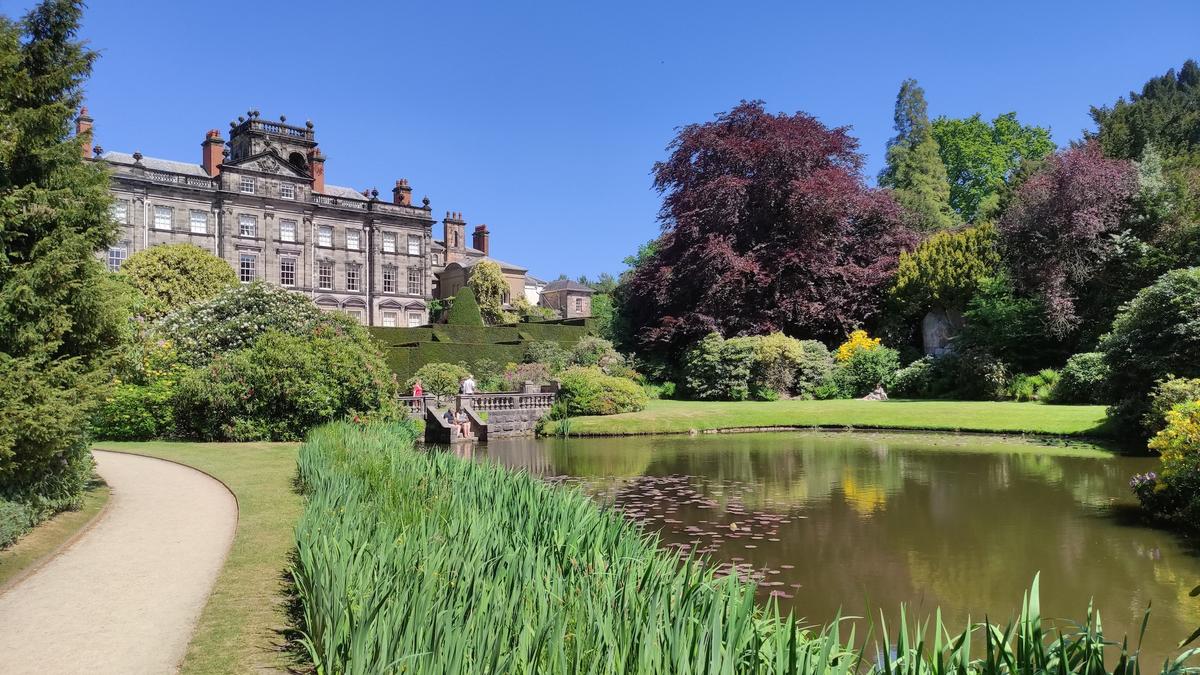“It’s a garden made for getting lost in,” says Dave, the man on the gate at Biddulph Grange. “However, I will give you a map.”
Wind the clock forward 20 minutes and I’m on a pine-fringed path where I find a group of English pensioners clutching their maps.
“Excuse me,” says one, with a hopeful smile. “Do you know where we can find China?” It’s possibly the most alluring place in this whole garden, where a golden water buffalo overlooks a carp pond by a colourfully flamboyant temple and footbridge.
Together, scouring our maps, we deduce that if you go through that tunnel, around that path, down those steps, past the stumpery of ancient oak trees, you should eventually locate it.
Just as I’m about to head towards a handsome cluster of Chilean monkey puzzles and Mexican Montezuma pines, someone in the group announces with a throaty laugh that on the back of a map is a section of interest. It’s titled “How to find the Chinese Garden”.
Biddulph Grange is that kind of place; exotic and eclectic, a bit of an adventure, cleverly set over several levels of a National Trust-run estate in the moorlands of Staffordshire, where the Midlands of England meet the North.
Billing itself as “The Garden Town of Staffordshire”, Biddulph is twinned with Fusignano, a small town near the Adriatic coast of northeastern Italy. There are Mediterranean influences at Biddulph Grange Garden, but it’s the flavours, species, heritage and history of the East and the Americas that dominate here.
One minute you’re immersing yourself in the Himalayan Glen, the next you’re wandering beneath maturing Californian sequoias — felled and replanted in 1995 — or discovering “Egypt”, where stone sphinxes guard a tomb-like tunnel topped by a pyramid-shaped yew hedge and containing a statue of Thoth, the god of botany.
You can also mosey along a shaded avenue of lime trees or idle and picnic on wide open lawns.
I’m visiting on a warm May day when the bushy rhododendrons are in vivid bloom by the lake and gardeners are tending to multiple varieties of tulips on the Dahlia Walk (which will be flush with dahlias in late-summer, early-autumn).
Dahlias are native to Mexico and Central America, a region that gripped James Bateman, who, between the 1840s and 60s, created this garden with his wife, Maria, and their artist and landscaper friend, Edward Cooke.
A landowner and horticulturist, Bateman had penned one of the heaviest and most important and beautifully-illustrated botanical tomes of the early Victorian era: The Orchidaceae Of Mexico And Guatemala, published amid the “orchid fever” that was sweeping Europe at the time (Bateman’s obsession with orchids began even earlier, aged just eight, when he received one as a gift).
Using his inherited wealth, he funded plant hunters, who would pluck orchids and other species — rhododendron from Turkey, golden larch from China, cedar from the Himalayas, maple from Japan — and transport them back to his estate and its fledgling garden.
You can learn more about Bateman, how he blended his scientific and religious beliefs and the rise, fall and renaissance of this garden in informative panels scattered across the garden (including in the half-timbered, mock-Tudor Cheshire Cottage).
There’s a small exhibition, with old photographs, in the basement of the neo-Gothic Biddulph Grange mansion, which was built in 1897, three decades after the Batemans left for London.
Replacing an earlier Italianate-style villa destroyed in a fire, the property was later used as a hospital before falling into neglect. There’s now a cafe and a second-hand bookshop on the mansion’s ground floor.
Taking ownership of the Biddulph grounds after fundraisers campaigned to salvage the site, the National Trust embarked on its biggest-ever garden restoration project between 1988 and 1991 and it regularly undertakes tweaks and repairs.
The temple in the Chinese garden was recently re-roofed with more than 600 new ceramic tiles — built by specialist tile manufacturers in Stoke-on-Trent and based on the original design.
The craftsmanship is excellent and another reason to seek out this gorgeous garden within a garden.
+ Biddulph Grange Garden is usually open daily, 10am to 5.30pm, between April and November, with earlier closing times in the colder/darker months. Admission is £13 ($27) for adults, £6.50 ($13.50) for children aged 5-17. See nationaltrust.org.uk.+ For more information on visiting Staffordshire, see visitstaffordshire.com.+ To help plan a trip to Britain, see visitbritain.com.
